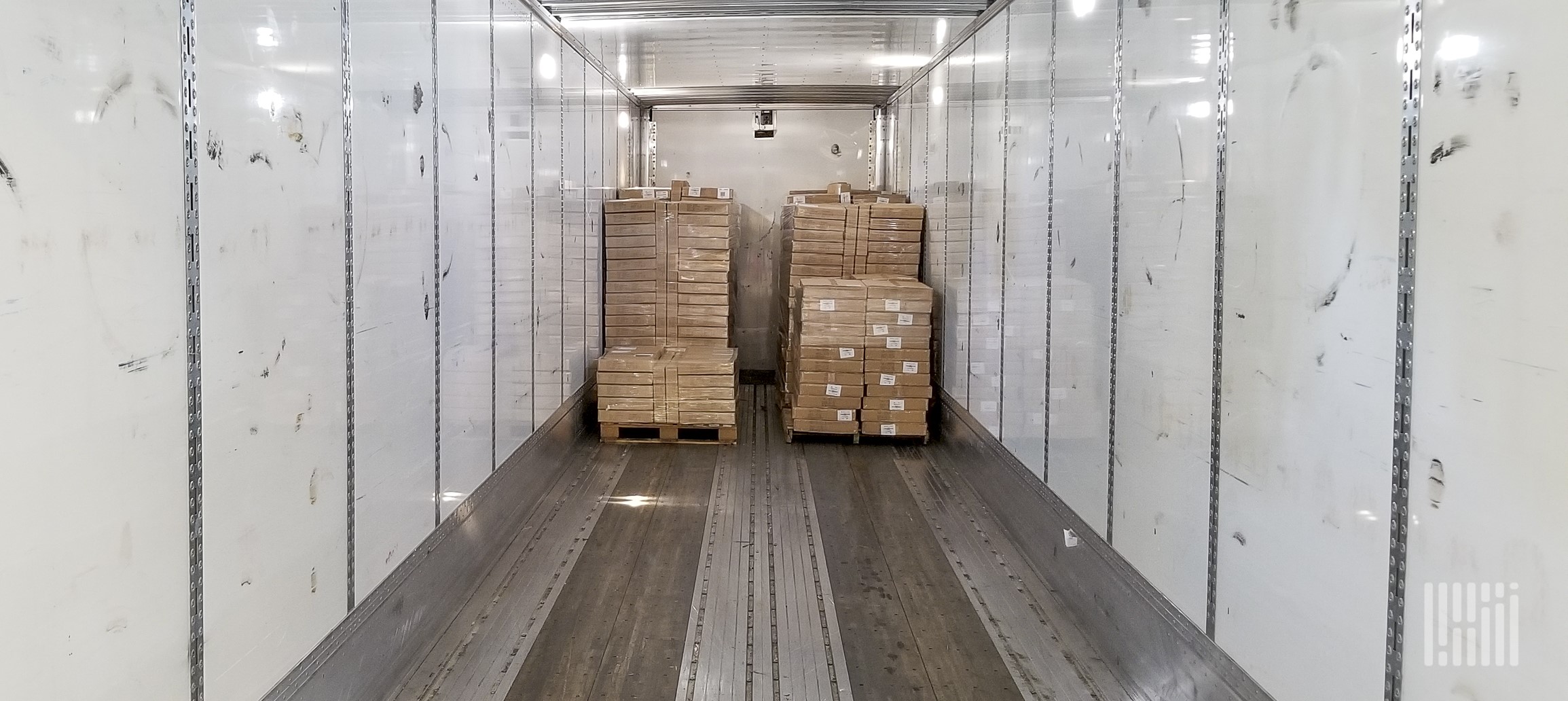Need to ship less than a whole truckload of goods? Consider LTL freight shipping.
LTL freight shipping means less than truckload freight shipping. LTL is when your freight doesn’t take up all of the space in the trailer.
Shipping like this can save you money because you’re only paying for what you use. Keep in mind; you have to stay under the 15,000-pound weight limit for LTL freight shipping.
How Does LTL Freight Shipping Work?
LTL freight shipping works by only using the amount of space in a trailer that you need. The remaining space is used for freight from other companies, thereby cutting down on individual transportation costs. It also allows the driver to pick up LTL loads on the way back without having to fill out the entire trailer with just one customer.
What Type of Shipping Is LTL?
LTL shipping is less than truckload shipping. It is considered LTL when you ship anywhere from 1 to 6 pallets of goods, all weighing no more than 15,000 pounds. Therefore, it is a cheaper way of having freight transported for smaller businesses.
How To Determine LTL and Freight Class?
LTL freight is most commonly packaged onto pallets, which determines how much space you are using. You also pay different prices depending on your freight class. Your freight class is determined based on various factors such as:
- Density: How much your freight weighs in comparison to its size. Higher density freight usually equates to a lower freight class.
- Liability: The freight’s potential for damage to itself or other freight on board; also its perishability. A higher liability equates to a higher freight class.
- Handling: How easy is it to move this freight around? Does it require special loading or handling? Harder to handle freight equates to a higher freight class.
- Stow-ability: How the load fits into the trailer. Can the cargo be stacked or turned on its side? The easier it is to stow your freight, the lower the freight class.
What Are the Factors That Determine LTL Freight Rates?
Several factors affect the costs of shipping LTL freights.
- How far your freight needs to be shipped. Longer travel equals higher prices.
- The freight class of your shipment. Higher freight classes are more expensive to ship.
- The base rate of your LTL carrier. Different companies have different rates.
- FAK or freight of all kinds. It will allow you to ship multiple products with different freight classes under a negotiated freight class in the middle.
- The AMC or the absolute minimum charge. The minimum amount you need to spend for the carrier to move your shipment.
- Accessorial charges. If the carrier has to perform extra services to provide your shipment, this will cost you extra.
Working through 3PL (third-party logistics), you might be able to negotiate a discount on your freight.
What Are the Limits for an LTL Shipment?
The limits for an LTL shipment differ per carrier, but generally, the load should weigh between 150 pounds and 15,000 pounds.
How Many Pallets Is Considered LTL?
An LTL freight shipment is a shipment that contains at least one pallet and up to six pallets of freight.
Example of LTL Freight Shipping
Say you ship two pallets of widgets from Boston, MA, to Chicago, Il.
- A local driver in Boston picks up your pallets and delivers them to the terminal in Boston.
- In the terminal, it gets allocated to the door for Chicago.
- All pallets at the Chicago door will then be loaded onto a long-haul truck which will deliver the shipment to the breakbulk terminal in the next area.
- Here, the shipment will be stripped from the trailer and redivided to be put on trailers going to different locations.
- Our shipment will be loaded onto the trailer that is headed in the direction of Chicago.
- There might be more breakbulk terminals along the way, but eventually, it gets delivered to the local terminal in Chicago.
- The freight will be picked up by a local driver, who will then deliver the two pallets to their final destination in the local terminal.
Here’s another example. Say you ship four pallets of flashlights from Boston, MA, to Helena, MT, in the winter.
- A local driver will pick up your pallets and deliver them to the terminal in Boston.
- Once in the terminal, the shipment gets allocated to the door for Helena.
- All pallets at this door get loaded into a trailer and are delivered to a container yard.
- The trailer will be transported from the container yard on the railroad to a container yard in Helena.
- A bobtail driver will come to pick up the trailer at the container yard and deliver it back to the local terminal.
- Once back at the local terminal, it will be loaded onto a local truck to be delivered to its final destination.
As another example, imagine you’re shipping three pallets from Boston, MA, to Burlington, VT.
- A local driver picks up your shipment and brings it to the terminal in Boston.
- Here it is allocated to the door for Burlington.
- All pallets at this door get loaded onto a long-haul truck headed to the local terminal in Burlington.
- Once it arrives, your shipment will be loaded onto a local truck, which will deliver it to its final destination.
Things to Consider When Choosing an LTL Freight Shipping
You can certainly save money using LTL freight shipping. However, there are a few things to be aware of that are different from FTL shipping. Therefore, it is essential to choose the right LTL freight carrier.
Cost
The cost of LTL shipping is generally cheaper because you’re only paying for your portion of the trailer. Different carriers offer different services at different rates. It always pays off to compare prices.
Special Equipment Capabilities
Make sure that your carrier of choice has the necessary equipment to deliver your shipment correctly. For example, if you require a liftgate to offload your freight, pick a freight carrier that has trailers equipped with liftgates.
On-Time Performance and Reliability
Because LTL freight shipping combines shipments from different companies, it has more stops along the route and therefore can take longer to arrive than an LTL shipment. This also means that a shipment might arrive on a later date than the estimated delivery date.
To find out how reliable an LTL carrier is, you can always call them for more accurate information or inquire at a fellow company that uses their service.
Service Area
Different freight carriers will have different service areas. Make sure that your shipment fits within your carrier’s service area. Carriers will often make agreements with other carriers to broaden their coverage, potentially affecting the handling of damage claims.
Insurance
Insurance policies vary by carrier companies. Always inquire about their limit of liability, which is the maximum amount they will pay out in case of a damage claim. Make sure that the carrier’s insurance policy fits the price tag of your shipment.
Customer Service
The most important thing to consider about customer service is that the company has an easy-to-find number to connect with a customer service representative. Stay clear from companies that are unresponsive or only offer customer service through email. You want to be able to find out what’s going on with your shipment if something goes wrong.
Claims Process
How does the claim process for this carrier work? How much time do you have to file a claim? What information are you required to provide? How long does it take to settle a claim? How many claims are settled successfully?
These are all questions you should ask the company’s sales division before you make your decision. Knowing these things upfront will prevent bad experiences later on.
Damage Rate
Because LTL freight shares the trailer with other LTL freight, it will be handled and moved around more often than if you had a dedicated trailer for your shipment. This may increase the chances of damage to your shipment. Always do a little research into how often damage claims are made with the carrier you intend to work with.
Advantages of LTL Freight Shipping
The main advantage of LTL freight shipping is that you can send a smaller shipment without paying for the entire trailer. As a business, you won’t have to wait for enough orders to fill up a whole truck; you can send out all your orders as LTL freight. LTL freight shipping offers you more flexibility.
Disadvantages of LTL Freight Shipping
Freight is handled more often in LTL freight shipping. Unfortunately, the increase in handling also increases the chance of damage to your product.
Because LTL freight consists of different shipments, the truck will have more stops along the route. Unfortunately, this also means that your shipment doesn’t have a direct route, which can drastically increase the expected delivery time or date.
LTL vs FTL or Full Truck Load
Say you have a shipment that needs to go from Tacoma, WA, to Fresno, CA. If you have a large shipment and use FTL freight shipping, it will be picked up at your location and then driven directly to the target location. There will be no detours or loading/unloading stops in between. But you are required to pay for the total capacity of the trailer.
If you have a smaller shipment that is shipped using LTL freight shipping, you will only pay for your share of the cargo. After picking up your shipment, it will be brought to a central hub. Then, it will then be transferred to a trailer that is heading to Fresno, CA. Once in Fresno, it will arrive at another terminal where it will be loaded onto the truck and delivered to the client.
Consider LTL for your shipping needs
If you are a small business owner, shipping your products using LTL freight shipping can really pay off. You’ll only have to pay for what you ship, which means you can make more frequent shipments. No longer will you have to wait for enough orders to fill up a truck. LTL freight shipping is well organized and should not take much longer than regular shipping. Just make sure you pick a reliable company that is easy to reach.



